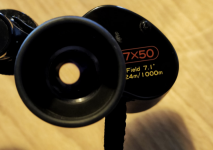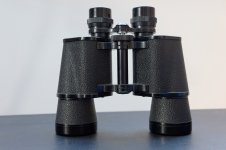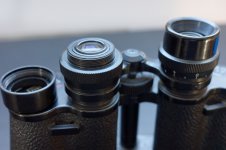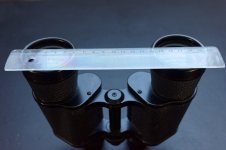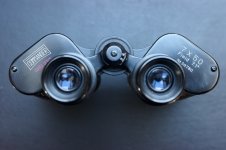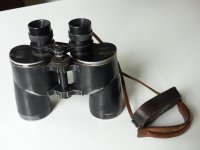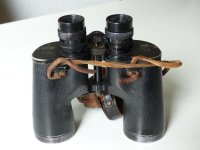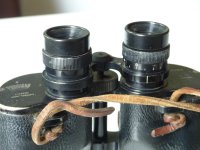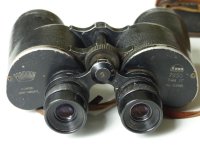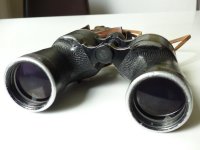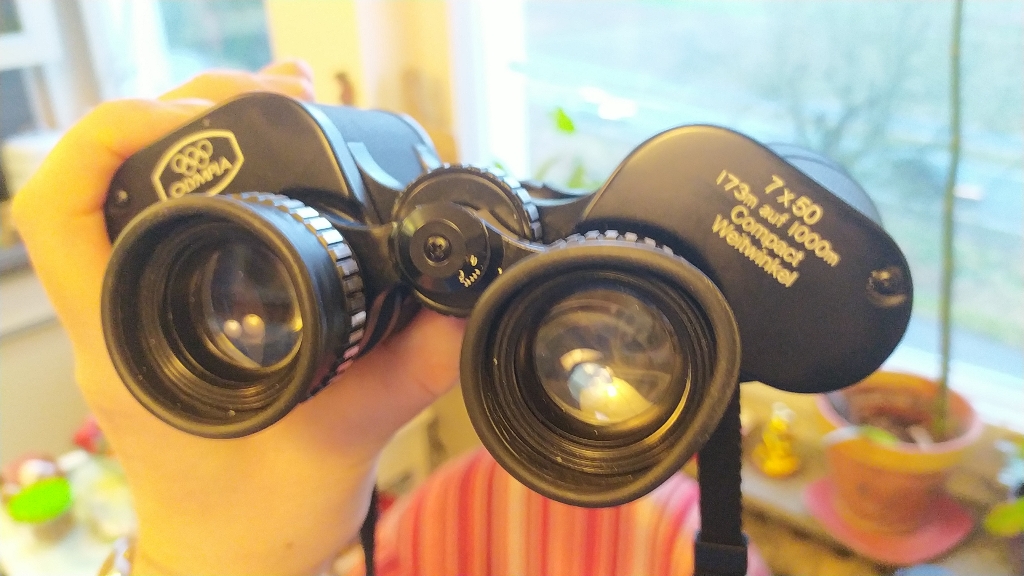I've been wanting to post about this for quite a while, and the current thread about marine 7x50 roofs has given me the last push.
In most areas of human activity there are items that end up becoming classics, and for a reason. Yes, you can enjoy the last trend in music, clothing, cars, painting, you can feel the vibrancy and relevance of something new and see how it relates to the current world. However, almost invariably, there will be times where you will look back and look for comfort in things that had stood the test of time, to tried and tested ideas that need no introduction, that we even take for granted and forget about. Say, no one needs to say how great Johann Sebastian Bach is and yet, you sometimes marvel in awe when rediscovering a sonata or a variation. Somehow I find 7x50 Porro prism binoculars are the J. S. Bach of binoculars: they're understated, timeless, sometimes overlooked and left aside, but still have a lot to offer.
Over time I've learnt to love binoculars, not only for what they can provide when watching birds or stars or the world around, but also by their sheer inner beauty as optical engineering marvels (the same way others love cars, watches or fountain pens). I have and have tried many different formats, some are my default/go-to/grab-n-go, like the 8x32... but I always go back to the good old 7x50 Porro. I've had several, fancier, more expensive, but for the time being I've settled for the inexpensive Vixen Ultima (I think it was also sold as Celestron). Not the brightest, not the fanciest... but able to provide indeleble images: deep, immersive, sparkling and full of detail glances of the everyday. I keep it by the kitchen window (because a) I spend an awful lot of time in the kitchen and b) the kitchen overlooks the garden) and use it almost on a daily basis, albeit in short sips, like a strong spirit full of character.
We are lucky to have an incredible choice of hi-quality optics to choose from. The price/performance ratio is really amazing in some cases, and you don't need to spend a fortune to enjoy amazing views. But somehow I feel the humble 7x50 is overlooked, although you can get a battered but trusty 2nd hand for peanuts and enjoy the relaxed view that the 7x50 can offer. Because the objectives are spaced wide apart, the stereoscopic sensation is amazing, and being a 7x the depth of field makes you take on a lot of what you see without need for refocusing (like if you had superpowers in your eyesight), the huge exit pupil makes using them a breeze. And finally, being a low-magnification device even moderately priced units can give an impressive level of detail, offering great experiences of plumage, texture of plants as well as placid view of the landscape (actually, to my eyes, they're the easiest way to get an almost "alpha-esque" view for little money). If someone had a pair of binoculars and was looking for a versatile and inexpensive 2nd pair, I'd recommend the joys of the 7x50. Yes, probably not for everyone, but so capable: relaxed view and easy to use as a loaner, great in low light...
So, here's to the good old 7x50 Porro (yes, your grandpa was wise enough!).
Any other 7x50 Porro lovers around? What's your pick? Any hidden gems? Any memories of that 7x50 you had and let go?
In most areas of human activity there are items that end up becoming classics, and for a reason. Yes, you can enjoy the last trend in music, clothing, cars, painting, you can feel the vibrancy and relevance of something new and see how it relates to the current world. However, almost invariably, there will be times where you will look back and look for comfort in things that had stood the test of time, to tried and tested ideas that need no introduction, that we even take for granted and forget about. Say, no one needs to say how great Johann Sebastian Bach is and yet, you sometimes marvel in awe when rediscovering a sonata or a variation. Somehow I find 7x50 Porro prism binoculars are the J. S. Bach of binoculars: they're understated, timeless, sometimes overlooked and left aside, but still have a lot to offer.
Over time I've learnt to love binoculars, not only for what they can provide when watching birds or stars or the world around, but also by their sheer inner beauty as optical engineering marvels (the same way others love cars, watches or fountain pens). I have and have tried many different formats, some are my default/go-to/grab-n-go, like the 8x32... but I always go back to the good old 7x50 Porro. I've had several, fancier, more expensive, but for the time being I've settled for the inexpensive Vixen Ultima (I think it was also sold as Celestron). Not the brightest, not the fanciest... but able to provide indeleble images: deep, immersive, sparkling and full of detail glances of the everyday. I keep it by the kitchen window (because a) I spend an awful lot of time in the kitchen and b) the kitchen overlooks the garden) and use it almost on a daily basis, albeit in short sips, like a strong spirit full of character.
We are lucky to have an incredible choice of hi-quality optics to choose from. The price/performance ratio is really amazing in some cases, and you don't need to spend a fortune to enjoy amazing views. But somehow I feel the humble 7x50 is overlooked, although you can get a battered but trusty 2nd hand for peanuts and enjoy the relaxed view that the 7x50 can offer. Because the objectives are spaced wide apart, the stereoscopic sensation is amazing, and being a 7x the depth of field makes you take on a lot of what you see without need for refocusing (like if you had superpowers in your eyesight), the huge exit pupil makes using them a breeze. And finally, being a low-magnification device even moderately priced units can give an impressive level of detail, offering great experiences of plumage, texture of plants as well as placid view of the landscape (actually, to my eyes, they're the easiest way to get an almost "alpha-esque" view for little money). If someone had a pair of binoculars and was looking for a versatile and inexpensive 2nd pair, I'd recommend the joys of the 7x50. Yes, probably not for everyone, but so capable: relaxed view and easy to use as a loaner, great in low light...
So, here's to the good old 7x50 Porro (yes, your grandpa was wise enough!).
Any other 7x50 Porro lovers around? What's your pick? Any hidden gems? Any memories of that 7x50 you had and let go?
Attachments
Last edited:




